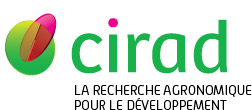De Deken Reginald, Bouyer Jérémy. 2018. Can sequential aerosol technique be used against riverine tsetse?. PLoS Neglected Tropical Diseases, 12 (10):e0006768, 4 p.

|
Version publiée
- Anglais
Sous licence  . .
DeDeken_2018_pntd_SATriverine.pdf Télécharger (376kB) | Prévisualisation |
Résumé : For the implementation of the sequential aerosol technique (SAT), several technical constraints such as the calibration of the spray, as well as the meteorological conditions during spray operations, need to be taken into account [1, 2]. Because some of these constraints differ depending on whether savannah or riverine tsetse flies are the target of control, the technique, which has been proven successful in southern Africa against Glossina morsitans, cannot be transferred indiscriminately to combat riverine tsetse flies [3]. This paper aims at addressing these elements and identifying which studies are required before using SAT against riverine tsetse species.
Mots-clés géographiques Agrovoc : Afrique
Mots-clés libres : Glossine, Insecticide, Pulvérisation aérienne, Riverine forest, SAT
Classification Agris : L72 - Organismes nuisibles des animaux
L73 - Maladies des animaux
000 - Autres thèmes
Champ stratégique Cirad : Axe 4 (2014-2018) - Santé des animaux et des plantes
Auteurs et affiliations
- De Deken Reginald, ITM (BEL)
-
Bouyer Jérémy, CIRAD-BIOS-UMR ASTRE (AUT)
 ORCID: 0000-0002-1913-416X - auteur correspondant
ORCID: 0000-0002-1913-416X - auteur correspondant
Source : Cirad-Agritrop (https://agritrop.cirad.fr/589262/)
[ Page générée et mise en cache le 2024-12-20 ]




